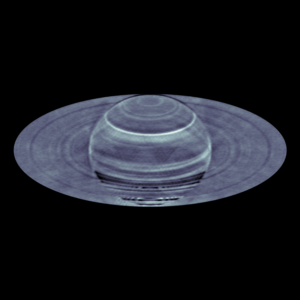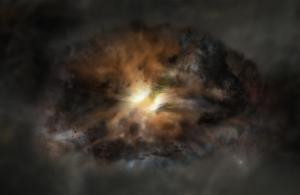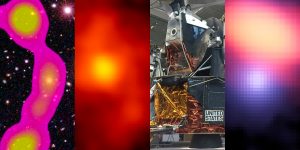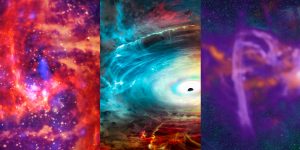A study of rare megastorms on Saturn using data from the National Science Foundation’s Karl G. Jansky Very Large Array has revealed disruptions in the distribution of ammonia gas in the planet’s deep atmosphere. The findings raise questions about just how different gas giants can be from each other, and challenge scientists’ understanding of how megastorms may form on planets other than Earth.


Extreme Galaxy Reveals Clues to Early Supermassive Black Hole Formation
While studying galaxies in the early Universe with the Atacama Large Millimeter/submillimeter Array (ALMA), scientists discovered one of the most extreme galaxies ever recorded in the early Universe. What’s more, it was hiding a unique supermassive black hole (SMBH). The observations could unlock clues about the early formation of these violent giants and how to find them.

VLA and ALMA Study Jupiter and Io
VLA teams up with Juno spacecraft to study Jupiter’s atmosphere, and ALMA reveals new details about Io’s volcanoes.

ALMA Makes First-Ever Detection of Gas in a Circumplanetary Disk
Scientists using the Atacama Large Millimeter/submillimeter Array (ALMA)— in which the National Radio Astronomy Observatory (NRAO) is a partner— to study planet formation have made the first-ever detection of gas in a circumplanetary disk. What’s more, the detection also suggests the presence of a very young exoplanet.

NRAO Media Tip Sheet: July 2016
VLA points to previously unknown galaxy cluster, GBT gets new vision, and ALMA uses double vision.






